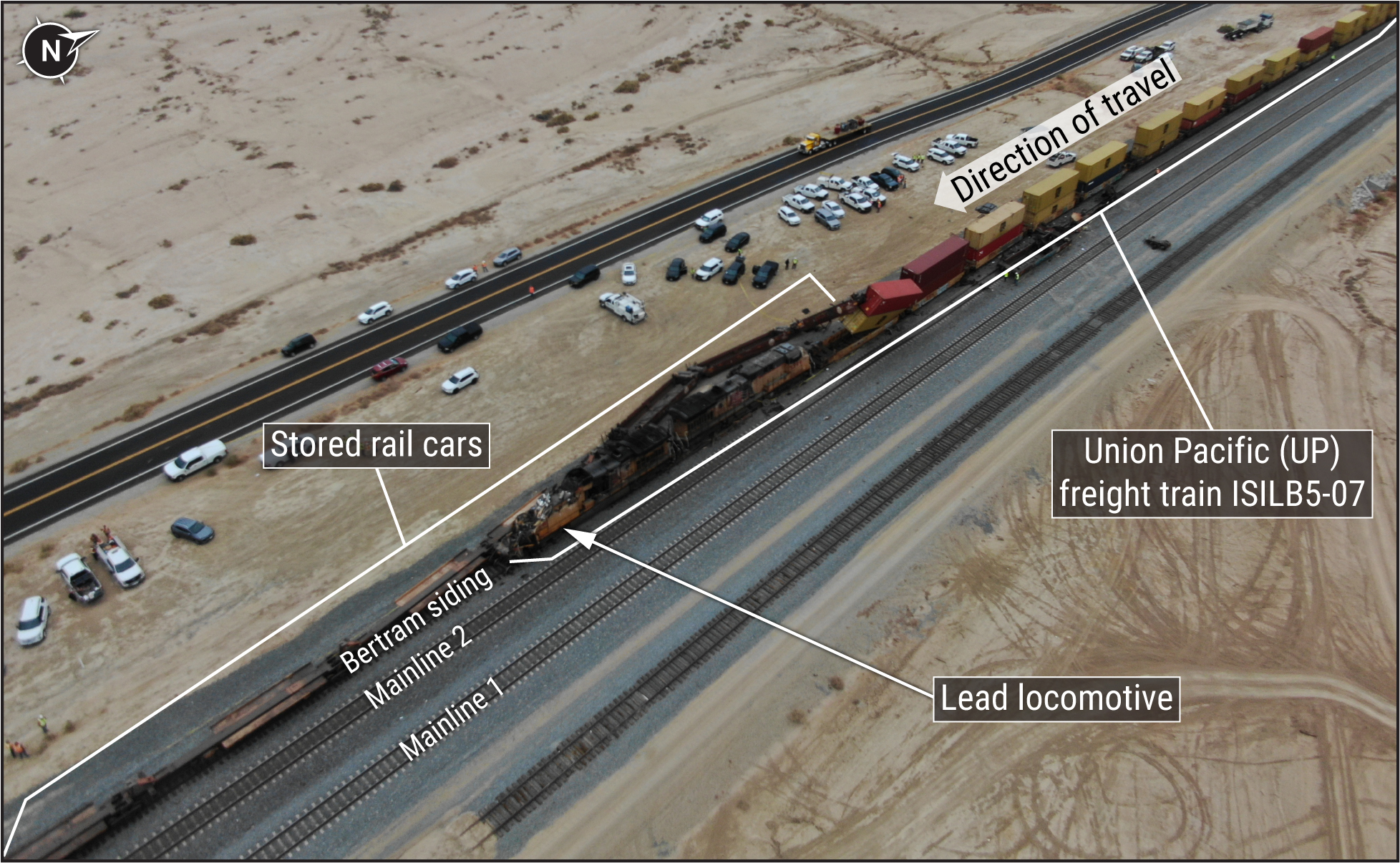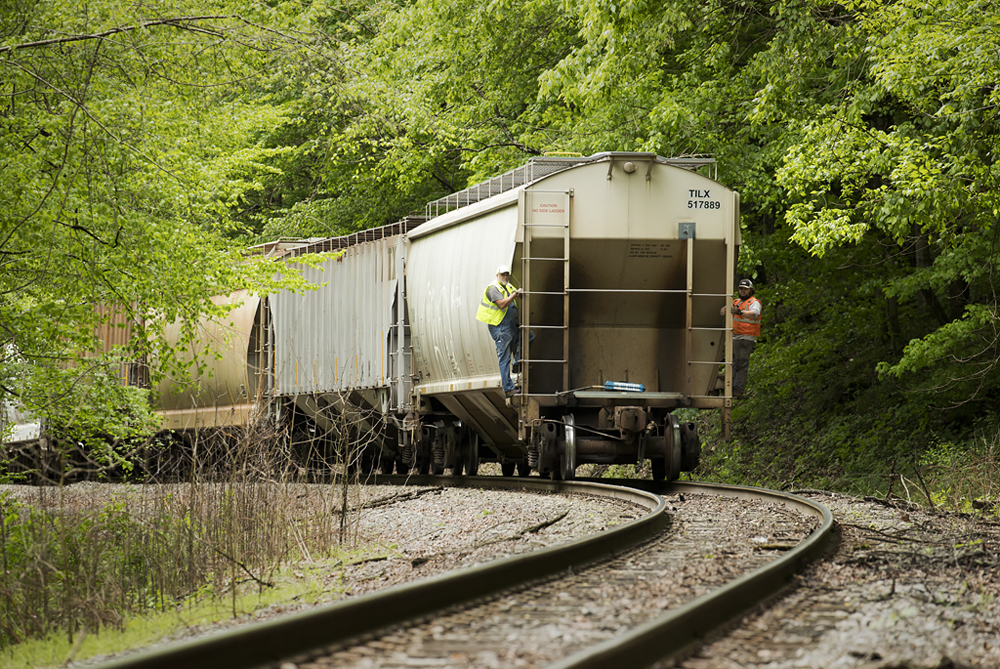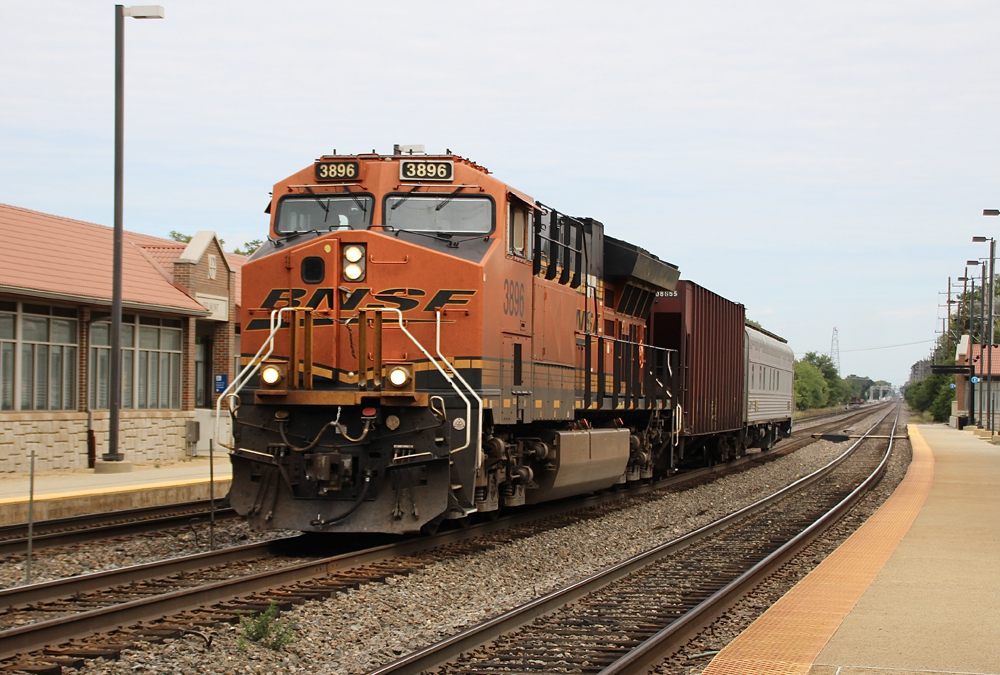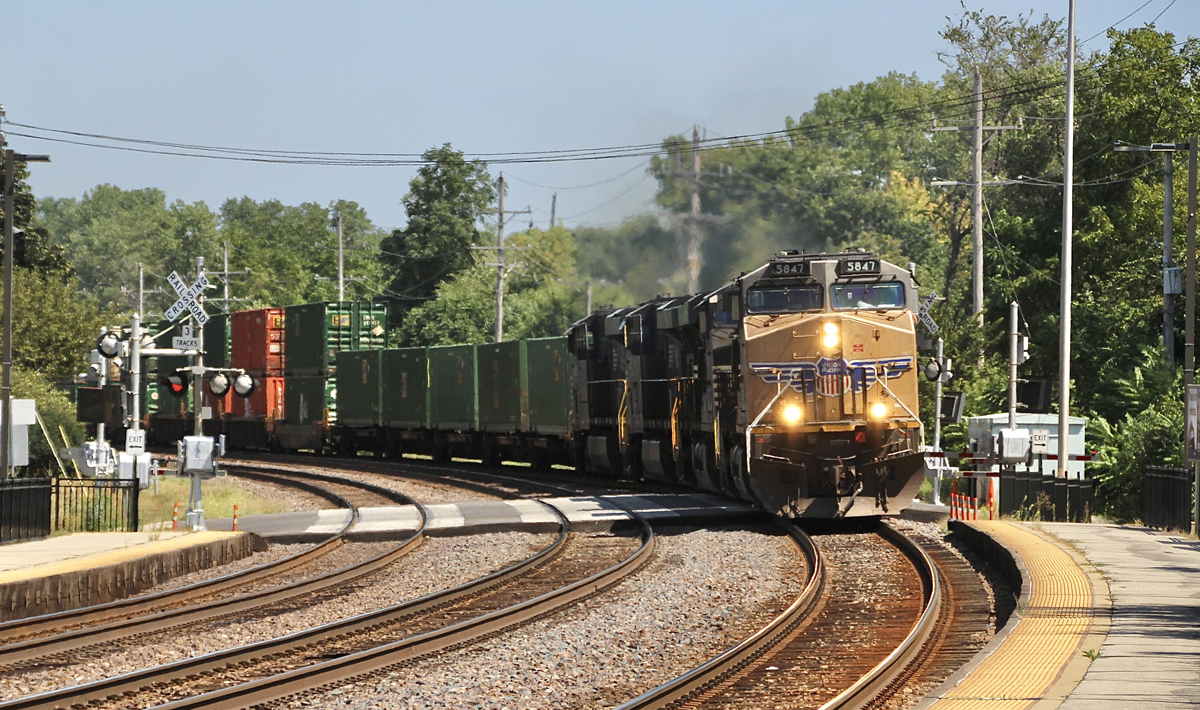
WASHINGTON — The probable cause of a fatal September 2022 collision on Union Pacific’s Sunset Route was the routing of an intermodal train into a passing siding that was occupied by 74 empty intermodal cars, a move that was made possible by the inappropriate removal of a computer-aided dispatching system block on the siding, the National Transportation Safety Board said today.
The NTSB investigation report said that factors that contributed to the wreck in Imperial County, Calif., which killed a UP engineer and conductor, included:
- The Bertram siding track not being spiked or clamped, as UP rules require for tracks where cars are placed in long-term storage.
- Surface rust on the rails and wheels of the stored cars that degraded the performance of the track circuit on the passing siding, which in turn caused the dispatching system in Omaha, Neb., to inaccurately indicate that the siding was unoccupied.
UP’s Yuma Subdivision runs alongside the Salton Sea, a highly saline body of water. The cars had been stored in the siding for more than eight months. The track circuit shifted between occupied and unoccupied nearly two dozen times in the nine hours before a stack train was routed into the siding. At the time of the 2:41 a.m. accident on Sept. 8, 2022, the track circuit showed Bertram siding was unoccupied.
“Train ISILB5-07 had been traveling timetable eastbound on main track 2 of the Yuma Subdivision when, because of a change of route plans, the train reversed direction into Bertram siding, a signal-controlled siding at milepost 646.1,” the NTSB said. “Upon entering the siding, with helper locomotives in the lead, the train traveled about 802 feet before colliding with a string of 74 empty intermodal railcars that had been stored in the siding since December 2021. The two lead locomotives and one intermodal railcar of train ISILB5-07 derailed, along with two of the empty stored intermodal railcars.”
The train was traveling at 28 mph at the time of the accident, the NTSB said, which was below the 30 mph maximum for trains diverting into the siding.
UP made several changes in response to the collision.
“After the accident, UP conducted a safety briefing for dispatchers, reviewing with each individual dispatcher the rules and processes for removing protection for standing equipment. UP updated operating rule 22.4.2 to require that the dispatcher confirm verbally that a track is clear of standing equipment before removing protection,” the NTSB said.
UP also updated its operating rule for protecting equipment on main tracks or controlled sidings with a new process. Now, a dispatcher adds a “cars tied down” track bulletin line item, which connects a track tag with a block on the dispatching display. If cars are being stored for more than 10 days, the corridor manager will work with the signal or maintenance of way departments to remove the track from service by disabling signals and switches.
In addition, UP made permanent changes to the signals at Bertram siding. At both ends of the siding, a restricting signal (red over flashing red) is now the most permissive aspect into the siding.













